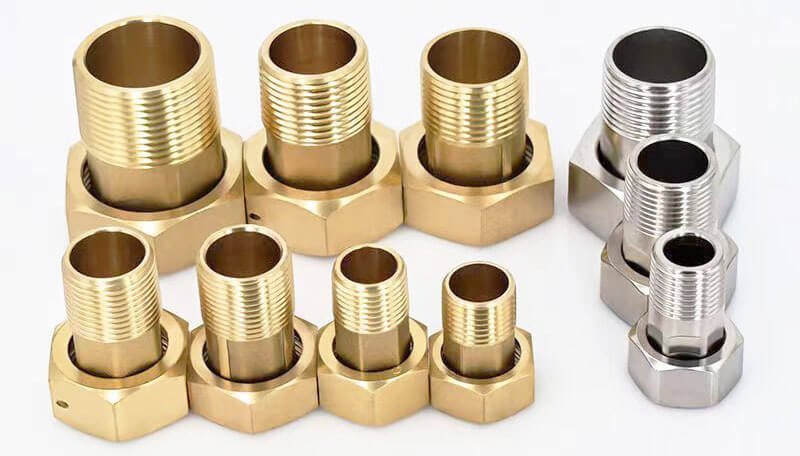Brass is a widely used material in many industries, and its versatility makes it especially important in the world of water purify connectors and pneumatic fittings. From ensuring corrosion resistance to offering high strength, brass has earned its place as a preferred choice for these applications.
In this article, we will explore the pros and cons of brass, examining why it is often chosen for such critical systems and where it might fall short.
What is Brass?
Brass is an alloy of copper and zinc, commonly used in manufacturing a wide range of products, including fittings, valves, pipes, and connectors. The properties of brass vary depending on the proportion of copper and zinc, resulting in different types of brass alloys, each with unique characteristics.
Composition of Brass
Brass is primarily made up of copper (Cu) and zinc (Zn), but other metals such as lead, tin, and iron may also be included to enhance certain properties. For instance, adding lead improves machinability, making it easier to create precise fittings and connectors.
Types of Brass
There are several different types of brass, each suited to specific applications:
- Red Brass: Higher copper content, making it more resistant to corrosion and ideal for plumbing and water systems.
- Yellow Brass: Contains a balanced amount of copper and zinc, often used in pneumatic fittings and automotive components.
- Free-Cutting Brass: Contains a small amount of lead, allowing for easier machining and is commonly used in precision manufacturing.
Each type of brass is chosen based on the demands of the particular system, such as pressure resistance or corrosion protection, and can significantly impact the performance and longevity of connectors and fittings.
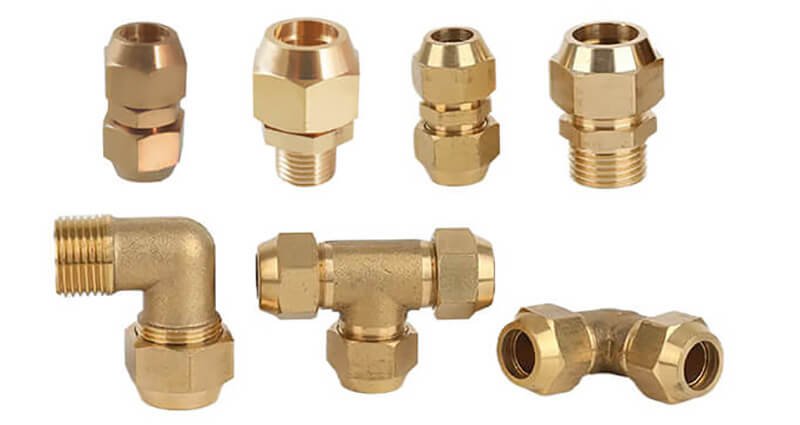
Pros of Brass in Water Purify Connectors and Pneumatic Fittings
Brass is a popular material for both water purify connectors and pneumatic fittings due to its many beneficial properties. Let’s dive into the advantages of brass, exploring why it is such a reliable and effective material in these systems.
Durability and Strength
One of the key benefits of brass is its durability. Brass fittings and connectors are known for their ability to withstand high pressures and harsh environments. This makes them particularly useful in pneumatic systems, where high-pressure air must be securely contained. Brass also resists wear and tear, ensuring that components last for a long time without deteriorating.
Corrosion Resistance
Brass is highly resistant to corrosion, especially in water and humid environments. This makes it an ideal material for water purify connectors, where constant exposure to moisture could lead to rusting or degradation in other metals. Unlike iron or steel, brass will not rust, which helps maintain the integrity of water filtration systems over time.
Malleability and Ease of Manufacturing
Another advantage of brass is its malleability, which allows it to be easily shaped into various sizes and forms. This flexibility in manufacturing makes it suitable for complex designs required in pneumatic fittings and water purifier connectors. Whether it’s creating intricate threads or specialized connectors, brass can be easily molded without compromising its strength.
Resistance to Degradation in Harsh Environments
Brass is resistant to many types of environmental degradation, such as the corrosion caused by saltwater or certain chemicals. This resistance is especially important for systems that operate in challenging conditions, such as pneumatic tools and water filtration units exposed to various contaminants. It helps maintain the long lifespan of the fittings and ensures that they continue to perform reliably.
Eco-Friendly and Recyclable
Brass is an eco-friendly material, as it is highly recyclable. This makes it a sustainable option for manufacturers looking to reduce waste and carbon footprints. Unlike materials that lose their strength after recycling, brass retains its properties and can be reused multiple times without diminishing quality, making it a cost-effective and environmentally responsible choice.
Thermal and Electrical Conductivity
Brass also has excellent thermal and electrical conductivity, which can be beneficial in some applications. While this might not always be a deciding factor in water or pneumatic systems, it is an added advantage in specific pneumatic components that require efficient heat dissipation or electrical connections. Brass helps prevent overheating and supports the reliable functioning of various systems.
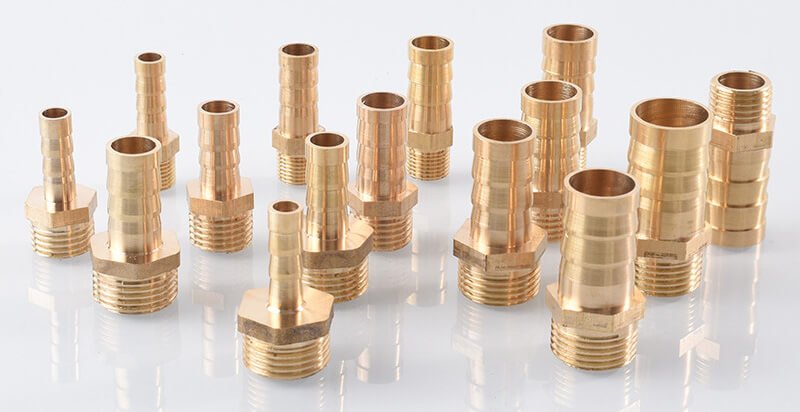
Cons of Brass in Water Purify Connectors and Pneumatic Fittings
While brass has many advantages, it also comes with some disadvantages that need to be considered when choosing it for water purify connectors and pneumatic fittings. Let’s explore the downsides of brass, helping you make a more informed decision about its use in various systems.
Cost
One of the primary drawbacks of brass is its cost. Brass tends to be more expensive than other materials such as plastic or aluminum. While its durability and resistance to corrosion make it a good investment in the long term, the initial expense can be a concern, especially for projects with tight budgets. For applications that don’t require the high performance of brass, alternative materials may offer a more cost-effective solution.
Weight
Brass is a heavy material compared to alternatives like plastic or aluminum. For certain applications, particularly in pneumatic systems where weight is a consideration, this can be a disadvantage. Lighter materials are often preferred in these cases to reduce the overall weight of the system, improving mobility or reducing the load on structural components.
Susceptibility to Dezincification
Dezincification is a phenomenon where the zinc component in brass is leached out, leaving behind a porous and weakened structure. This is a particular concern when brass is exposed to soft water or low pH conditions, such as those found in some water purification systems. In such environments, the material may degrade over time, which could compromise the integrity of connectors or fittings. This makes it essential to assess the water quality before using brass in sensitive systems.
Not Ideal for Extreme Temperatures
Brass is not the best material when it comes to withstanding extreme temperatures. While it performs well under moderate heat, high temperatures can cause brass to become soft, reducing its strength and making it more susceptible to deformation or failure. On the other hand, extremely cold temperatures can cause brass to become brittle, increasing the risk of cracking or breaking. For systems that operate in temperature extremes, other materials such as stainless steel may be a better choice.
Environmental Concerns in Mining
While brass is recyclable, the process of mining the copper and zinc needed to create it can have significant environmental impacts. Mining operations can lead to habitat destruction, water pollution, and other ecological issues. For those concerned with the sustainability of materials, this is an important factor to consider when choosing brass for water purification or pneumatic systems.
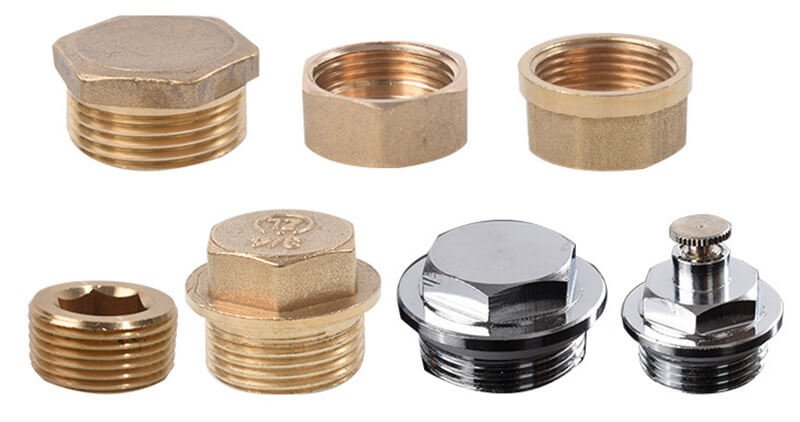
Brass in Water Purifier Connectors vs. Pneumatic Fittings
Brass plays a crucial role in both water purifier connectors and pneumatic fittings, but its application varies depending on the specific demands of each system. In this section, we’ll explore how brass performs in these two different contexts, highlighting its strengths and limitations in each.
Brass in Water Purifier Connectors
In water purification systems, brass is a preferred material due to its corrosion resistance and durability. Water filters and purification units require components that can withstand continuous exposure to moisture, chemicals, and varying water qualities. Here’s why brass is a top choice:
- Corrosion Resistance: Brass is resistant to rust and corrosion, which makes it ideal for water purifier connectors that will be exposed to moisture and contaminants over time.
- Durability: The strength of brass ensures that connectors and fittings last longer in water systems, reducing the need for frequent replacements.
- Non-reactivity: Brass is generally non-reactive with most waterborne substances, making it safe for use in drinking water systems.
- Long Lifespan: Brass connectors in water systems are less likely to fail due to wear, corrosion, or chemical exposure, ensuring that water filtration remains efficient for a longer period.
However, brass may not be the best option in all types of water environments. For instance, if the water contains highly acidic or alkaline conditions, dezincification could occur, weakening the brass and compromising its integrity. In these cases, other materials, like stainless steel, might be more appropriate.
Brass in Pneumatic Fittings
In pneumatic systems, brass is equally valued for its strength and resilience. Pneumatic fittings and connectors are subject to high pressure and often need to perform in extreme conditions. Here’s why brass excels in this area:
- Pressure Resistance: Brass fittings are known for their ability to handle high-pressure environments, which is essential for pneumatic systems where air or gas flows through the pipes and connectors.
- Malleability: Brass is easy to shape and form into the precise threads and seals needed for pneumatic connections, ensuring tight, leak-proof connections.
- Durability Under Stress: Brass’s malleability allows it to absorb stress without cracking or breaking, which is crucial when dealing with the vibrations and forces typically found in pneumatic systems.
- Temperature Resistance: Brass can withstand moderate temperature fluctuations, making it suitable for many pneumatic applications that operate under varying environmental conditions.
However, brass also has its limitations in pneumatic systems. Its weight might not be ideal in applications where the total weight of the system is a concern. Additionally, for extreme temperature or highly corrosive environments, alternatives like stainless steel or aluminum might perform better.
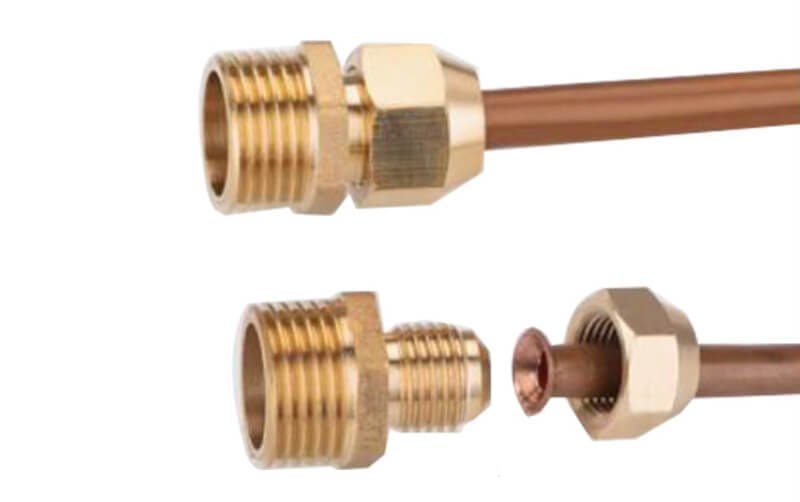
Key Differences Between Brass in Water Purifier Connectors and Pneumatic Fittings
While brass offers significant benefits in both water purification systems and pneumatic systems, the choice to use it depends on the specific requirements of each application. The key differences include:
- Water Purifier Connectors: Brass is highly effective in wet environments and can resist corrosion from water exposure. However, it may face challenges with highly acidic or alkaline water.
- Pneumatic Fittings: Brass performs well in high-pressure, dry environments, where its strength and ability to withstand pressure are key advantages. It may not be the best choice in extreme temperature ranges.
In conclusion, brass offers outstanding performance in both water purifier connectors and pneumatic fittings, but understanding its advantages and limitations in each context is essential to making the right choice for your system.
Comparing Brass with Other Materials
When considering materials for water purify connectors and pneumatic fittings, it’s essential to compare brass with other commonly used options, such as plastic, stainless steel, and aluminum. Each material has its own strengths and weaknesses, making it important to choose the right one for specific needs.
Brass vs. Plastic
- Cost: Plastic is typically less expensive than brass, making it a more budget-friendly choice for certain applications. However, plastic may not provide the same durability or strength as brass, especially in high-pressure or high-temperature environments.
- Corrosion Resistance: While plastic doesn’t corrode, it can degrade under prolonged exposure to certain chemicals or UV rays, which could be a concern in some water systems. Brass, on the other hand, offers superior corrosion resistance, especially in moisture-laden environments.
- Strength and Durability: Brass is much stronger and more durable than plastic, making it better suited for pneumatic fittings and heavy-duty systems. Plastic is generally not suitable for high-pressure or high-stress applications.
Brass vs. Stainless Steel
- Strength and Durability: Stainless steel is stronger than brass and is especially resistant to extreme temperatures and corrosive environments. However, it is heavier and more expensive than brass, which can be a limiting factor in some applications.
- Corrosion Resistance: Stainless steel offers excellent corrosion resistance, even in harsh environments, but brass also performs well in most water and pneumatic applications. Brass may be more vulnerable to dezincification in certain water conditions, whereas stainless steel is more resilient in acidic or alkaline environments.
- Cost: Brass is generally less expensive than stainless steel, making it a cost-effective choice for many applications where extreme strength isn’t necessary.
Brass vs. Aluminum
- Weight: Aluminum is significantly lighter than brass, making it ideal for applications where weight reduction is a priority. However, aluminum doesn’t offer the same strength or corrosion resistance as brass.
- Cost: Aluminum is typically cheaper than brass, which may make it attractive for projects with strict budget constraints.
- Corrosion Resistance: Brass outperforms aluminum in terms of resistance to corrosion. Aluminum, though resistant to rust, can degrade in certain water environments, especially when exposed to chlorides or extreme temperatures.
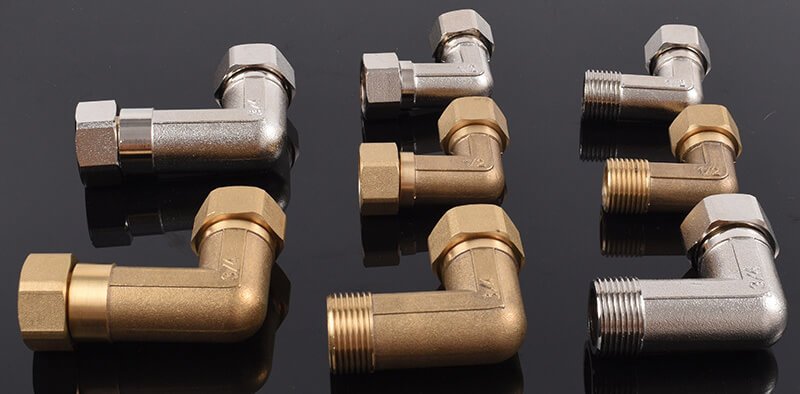
Conclusion
Brass is a highly valuable material for both water purify connectors and pneumatic fittings, offering numerous benefits such as durability, corrosion resistance, and strength. However, it’s important to carefully consider its cost, weight, and potential for dezincification in specific environments.
When compared to other materials like plastic, stainless steel, and aluminum, brass strikes a balance between strength and affordability, making it a top choice for many applications. It excels in water purification systems and pneumatic systems where corrosion resistance and high-pressure performance are essential.
Ultimately, the choice between brass and other materials will depend on the specific needs of your system, including environmental factors, budget, and performance requirements. By understanding the pros and cons of brass, you can make a more informed decision about whether it’s the right material for your application.

